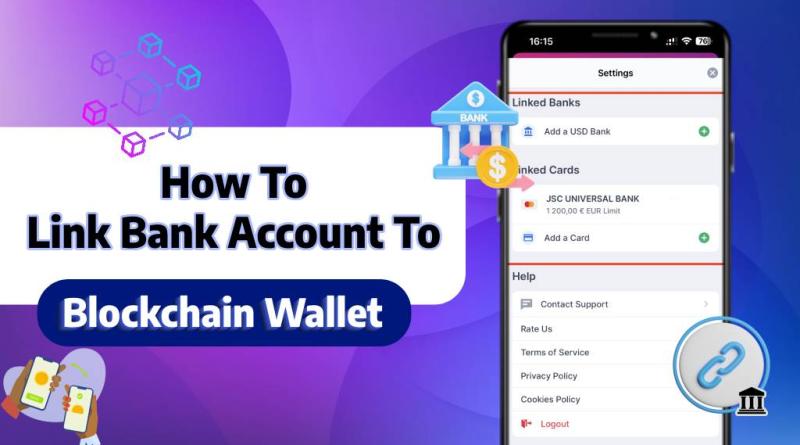How to Link a Bank Account to a Blockchain Wallet: A Step-by-Step Guide

As the adoption of cryptocurrencies grows, integrating traditional banking with blockchain technology is becoming more essential. Linking your bank account to a blockchain wallet enables you to buy, sell, and manage digital assets with ease. In this guide, we’ll walk you through the process step by step.
Why Should You Link a Bank Account to Your Blockchain Wallet?
Connecting your bank account to a blockchain wallet offers multiple benefits:
- Convenient Transactions: Easily buy cryptocurrencies using fiat money or withdraw funds from your wallet to your bank account.
- Streamlined Trading: Deposit and withdraw directly without using third-party services.
- Improved Efficiency: Save time and enjoy faster, seamless transfers.
This connection ensures that your transition between traditional and digital finance is smooth and secure.
What You’ll Need
Before getting started, ensure you have:
- An active blockchain wallet account, such as Blockchain.com or any similar service.
- A compatible bank account that supports cryptocurrency-related transactions.
- Verification documents, including government-issued ID and proof of address, to comply with regulations.
Step-by-Step Guide to Link Your Bank Account
1. Log In to Your Blockchain Wallet
- Open the Blockchain.com website or mobile app.
- Enter your credentials and complete two-factor authentication (2FA) on blockchain for added security.
2. Navigate to Payment Methods
- Access the Settings or Payment Methods section in your wallet.
- Look for the option to add a new payment method or link a bank account.
3. Select Your Bank and Region
- Choose your country to ensure compatibility with local banking regulations.
- Select your bank from the provided list. If your bank isn’t listed, you may need to manually input your bank details.
4. Provide Your Bank Details
- Enter key information such as:
- Bank Name
- Account Number
- Routing Number (or IBAN for international users)
- Double-check the details to avoid errors.
5. Verify Your Bank Account
Verification methods typically include:
- Micro-deposits: Small amounts are sent to your bank account. Confirm these amounts within your wallet to verify ownership.
- Direct API Connections: Some wallets use services like Plaid for instant account verification.
6. Complete the KYC Process
- Upload any required documents for identity verification.
- Ensure that your documents match the information registered with your wallet and bank.
Best Practices for Secure Linking
- Use a Private Network: Avoid using public Wi-Fi while linking accounts to safeguard your information.
- Enable Two-Factor Authentication (2FA): This adds an extra layer of protection to your wallet.
- Keep Credentials Private: Never share your login details with untrusted sources or individuals.
Common Issues and How to Fix Them
- Bank Not Supported: If your bank isn’t compatible, consider using an intermediary platform like PayPal or switching to a supported bank.
- Verification Delays: Allow up to 72 hours for verification. If it takes longer, contact wallet support.
- Transaction Errors: Double-check your details and ensure your bank supports cryptocurrency transactions.
Final Thoughts
Linking your bank account to a blockchain wallet is a simple yet powerful way to bridge traditional banking and cryptocurrencies. By following these steps, you can unlock greater convenience and efficiency in managing your digital assets.

Comments